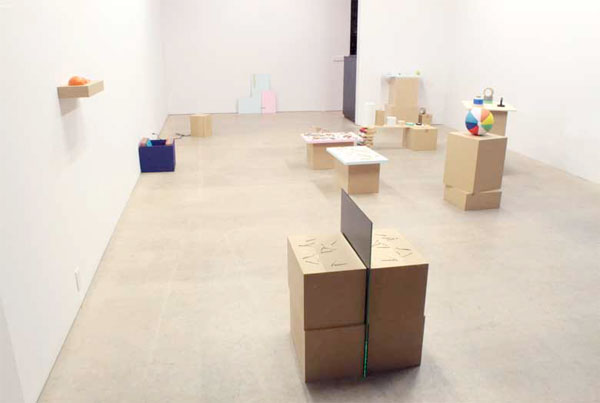
LOOK CLOSER…What are the boundaries between reality and plausibility? What is real and what is simply an optical illusion? The Cypriot origin artist, Roula Partheniou who lives and works in Toronto, Canada, deals with the narrow limits of reason, the dimensions, the law of probability and color by using simple, everyday objects, she is inviting us to a creative game of exploration and discovery, where observation and attention to detail is a prerequisite for participating.
Can you tell me about your origins?
I was born in Niagara Falls, Canada, and grew up there. I studied Fine Arts at the University of Guelph and then moved to Toronto. My parents came to Canada in 1974 after their village, Argaki, was occupied during the Turkish invasion. They chose to leave Cyprus rather than live as refugees in their own country, and at the time they considered their move to be temporary, until the issues in Cyprus were resolved, which of course has never happened.
What did your parents do?
In Cyprus, my father owned and ran a machine shop and rented properties to local merchants. My mother worked for the Government as a draftsperson. In Canada, she works as a waitress, and my father is a machinist and owns several rental properties. I can’t imagine being in the position of having to leave everything behind and start over. But they were very careful never to dwell on regrets or resentments, which is something I’ve always really admired.
How did it all start for you? I mean to be an artist…
It’s hard to say – I guess it started with the decision to go to art school rather than pursue a degree in architecture, which is something I also felt I could be passionate about. I knew that going to art school was the least practical of the two choices, but I felt more excited about the less delineated path. What I mean by this is, as an artist I wouldn’t be limited in terms of what interesting thing or question or idea I could dedicate my time and efforts to. It was this leap – ignoring the practical in favor of answering to my curiosity – that was the first key moment. I was already deciding to make sacrifices in order to be able to have the freedom to play and make things.

Congratulations on your last show Never Odd or Even, it was amazing! Can you describe the idea behind this exhibition? What’s behind your work?
Thanks! The exhibition was made up of what looked to the viewer to be an assortment of everyday objects that had been hastily unpacked into the space. Stacks of tape, toilet paper, stacks of books, cardboard boxes, burnt matches, chewing gum, cigarettes, erasers, a beach-ball, a tennis ball, etc. It becomes clear, upon closer inspection, that these objects are in fact sculpted replicas. Most of them are made of wood or foam, painted in flat, matte acrylic paint. The degree of veracity from object to object varies from very reductive versions of objects, to highly detailed copies. In some instances, a lot of detail is actually missing or is somewhat distorted from the actual, such as cigarettes and erasers whose colors are accurate but the ratios are skewed and the forms stretched and elongated, or a basketball that is painted to look like a beachball. The effect on the viewer is disorienting as they navigate through a room of objects that are familiar yet not. This double-take moment is key to the work and demands that the viewer re-negotiate the assumptions they bring to the objects as well as their relationship to them.
What do you enjoy most, the procedure or the result?
Despite my work being process based, its actually the end result that I take most pleasure in, because it is not as predetermined. Often I’ll start with a material which will dictate a kind of treatment or procedure or approach and the end product is a bit of a surprise – something emerges from the process. I try to minimize my own aesthetic judgment and allow the material itself to determine any formal decisions such as colour, scale, etc. So for me, the more interesting transformation occurs at the point where the piece I’m working on takes on a life of its own.
Where do you find inspiration?
Hardware stores, lumber yards, toy stores, dollar stores, charity shops, garage sales, bookstores, libraries. Sometimes a sculpture presents both its own problem and the solution to that problem.
What would you consider your main influences?
My work has its roots in Minimalism, Conceptual and Pop Art. Particularly, I’m interested in exploring where these approaches overlap – employing Minimalist strategies such as process and repetition and the Pop Art mainstays of appropriation and the use mass-produced objects. Sol Lewitt’s Sentences on Conceptual Art have also largely influenced my work, in particular the statement: ‘The idea is the machine that makes the art’.
What is talent for you?
I admire work that is smart, with thoughtful, considered execution, and I tend to value this much more so than technical skill.
What is the important human quality you have learnt in your life?
Well I suppose the qualities that come to mind are related to how we interact with one another – things such as patience, compassion and trying to see things from multiple perspectives.
Interview: Vasilios Dofoudis | website: roulapartheniou.com



